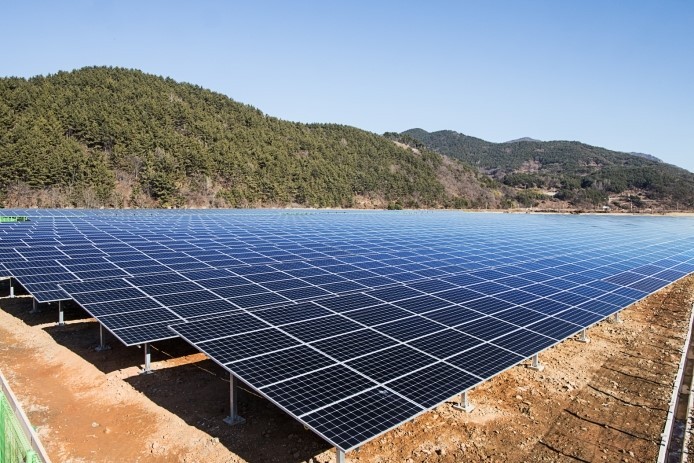Farmland the size of Gangnam converted to solar farms during Moon administration
By Kim Byung-wookPublished : Oct. 3, 2021 - 15:01

President Moon Jae-in‘s aggressive push for renewable energy has incentivized increasingly more farmers to repurpose their land as solar farms, drawing concerns over South Korea’s food security.
According to Ministry of Trade, Industry and Energy data obtained by Rep. Yoon Young-seok of the main opposition People Power Party, farmland amounting to the size of Gangnam -- the third largest district in Seoul – has been transformed into solar farms over the past five years.
In 2016, solar farms worth 206MW replaced farmland. After Moon took office, however, the trend was accelerated, the figure spiking from 285MW in 2017, 541MW in 2018, 903MW in 2019 to 1,008MW in 2020. Simply put, a total of 2,945MW of solar farms took the place of farmland over the five-year period.
Based on calculations by the Korea Energy Agency, a 1,000MW solar farm requires 13.2 square kilometers of land. This means that 2,945MW would need approximately 39 square kilometers of land, which is equivalent to the size of Gangnam.
“In 2019, South Korea‘s food self-sufficiency rate was 45.8 percent. It’s questionable whether overtaking farmland with solar power is the right situation,” Yoon said.
Industry sources suggest two government policies gave birth to the crisis. In 2018, the government strengthened regulations for installing solar panels on mountainsides to prevent deforestation.
This triggered solar power developers to shift their attention to farmland in rural areas, which is more expensive than land on the mountains, but still cheap thanks to generous solar subsidies granted by the government.








![[Kim Seong-kon] Democracy and the future of South Korea](http://res.heraldm.com/phpwas/restmb_idxmake.php?idx=644&simg=/content/image/2024/04/16/20240416050802_0.jpg&u=)







![[KH Explains] Hyundai's full hybrid edge to pay off amid slow transition to pure EVs](http://res.heraldm.com/phpwas/restmb_idxmake.php?idx=652&simg=/content/image/2024/04/18/20240418050645_0.jpg&u=20240418181020)

![[Today’s K-pop] Zico drops snippet of collaboration with Jennie](http://res.heraldm.com/phpwas/restmb_idxmake.php?idx=642&simg=/content/image/2024/04/18/20240418050702_0.jpg&u=)